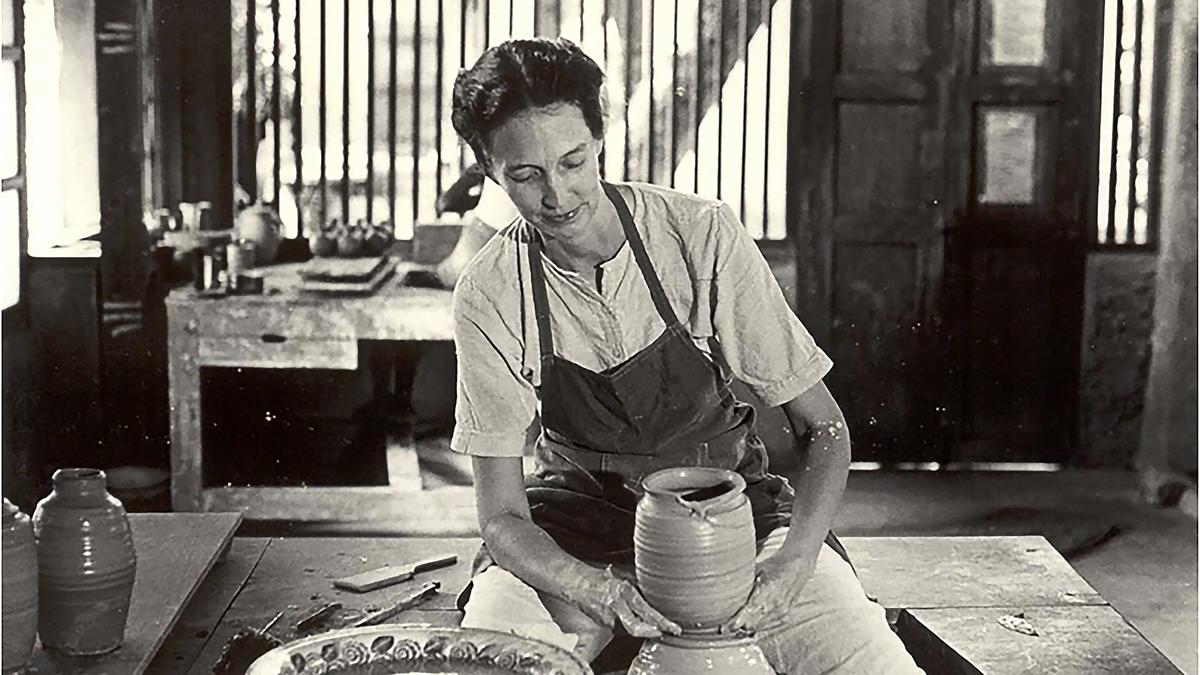
Tribute | Deborah Smith: a fulfilled life of ceramics
The Hindu
Deborah Smith from Auroville had started a culture of stoneware ceramics in a hinterland known only for its local red-clay and terracotta
It felt like we were at a ceramic conference. The who’s-who of the pottery scene in Puducherry and Auroville were present, as were Golden Bridge Pottery students, ex-students, staff and ex-staff. (Should have taken a group photo!)
ALSO READ Puducherry’s Golden Bridge Pottery co-founder Deborah Smith passes away
Only, this was at the Sri Aurobindo Ashram cemetery in Muthialpet. We had come to bid our farewells to a special someone. As a heady aroma of flowers and incense filled the air, they built a brick kiln around our Debby, who was dressed in a pretty white frock, looking like translucent porcelain, serene and at peace… and I promise I spotted her fleeting, embarrassed smile for a fraction of a moment at the fuss around her.
Soon a slurry of red clay and straw signalled the business we had come over for. Quietly, she went up with the fragrance of jasmine and the heat of casuarina wood, her fuel of choice for her production firings. The irony of the situation was not lost on the clutch of dewy-eyed potters present; what a beautiful way for a potter to move to another realm.
Deborah Smith once said to me, “The flower-power, hippie culture of Haight-Ashbury somehow bypassed me. I never even wore flowers in my hair till I reached South India!” Instead, she graduated in Japanese language at Stanford University, where, in 1967, she met Ray Meeker in the ceramics department of USC. She had just spent two years in Japan studying pottery-making and apprenticing with master potter Yamamoto Toshu in Bizen. She was now, again, heading to Japan as an interpreter to Susan Peterson, who was researching her book on Japan’s National Living Treasure, Hamada Shoji.
In 1971, a route from Mashiko led her to the Coromandel Coast of India, to Puducherry’s Sri Aurobindo Ashram. An Ashram secretary, upon hearing of her ceramic background, asked if she would be interested in starting a pottery workshop for them. “Yes,” she said, “if my friend comes and agrees to build a kiln.” The friend, Ray, arrived a few months later, and the rest, as we say, is a melee of history and folklore.
Ray and Deborah had discovered in each other a vague interest in the philosophy of the East, not uncommon in the era of the Beatles and Ravi Shankar. What began as a 200 square feet thatch-shed on a “lucky spot” assigned to them by the Mother at the Ashram, has today grown into a legacy. Golden Bridge Pottery got its name from a line from Sri Aurobindo‘s epic poem, Savitri, describing the Divine Mother:











